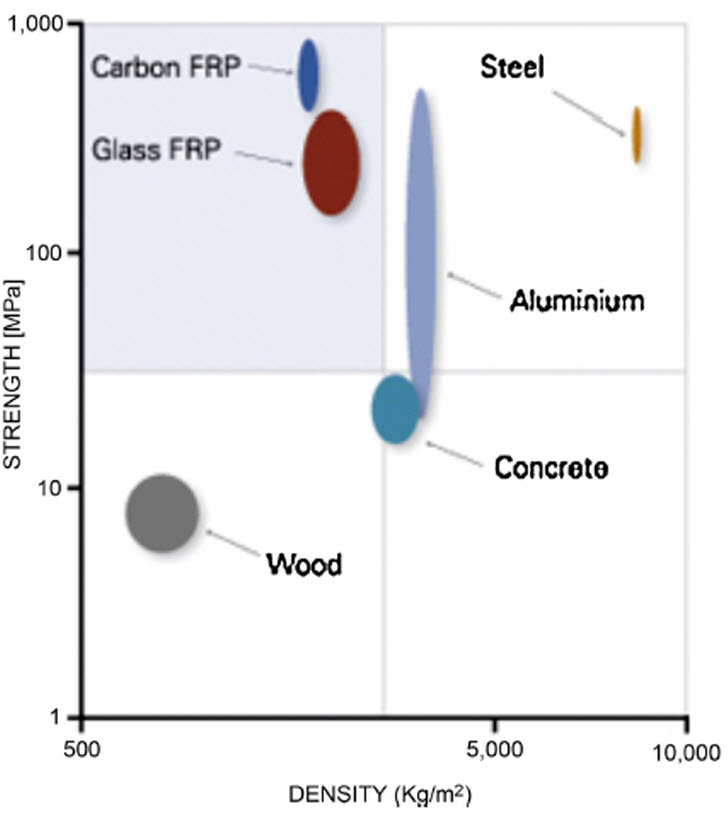
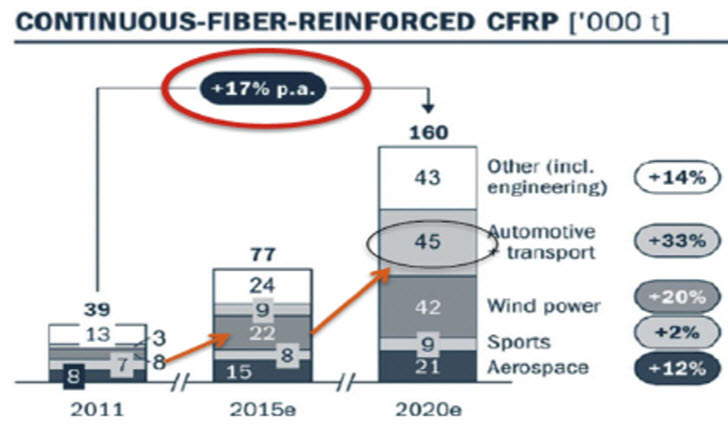
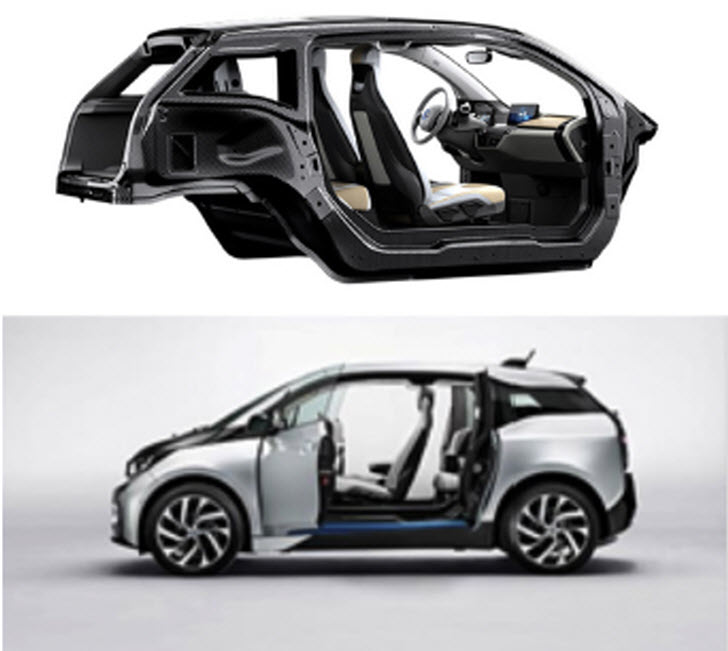

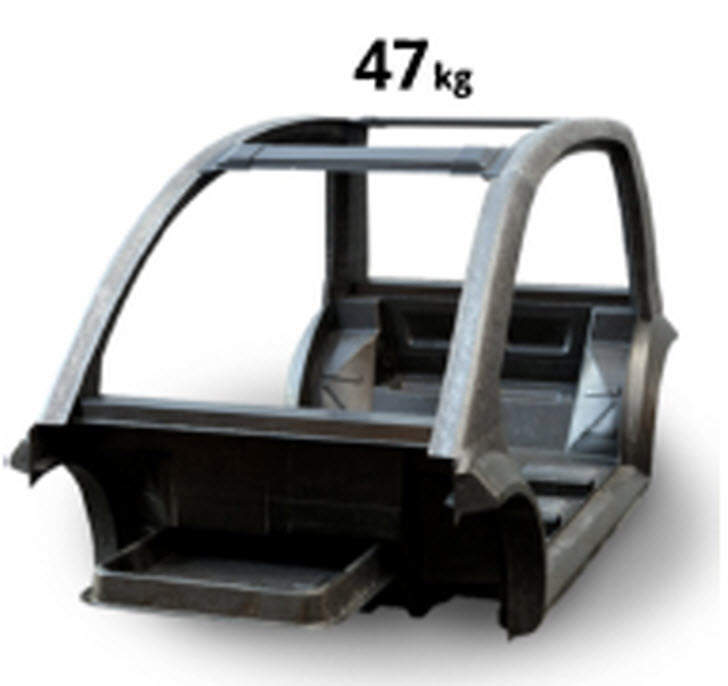

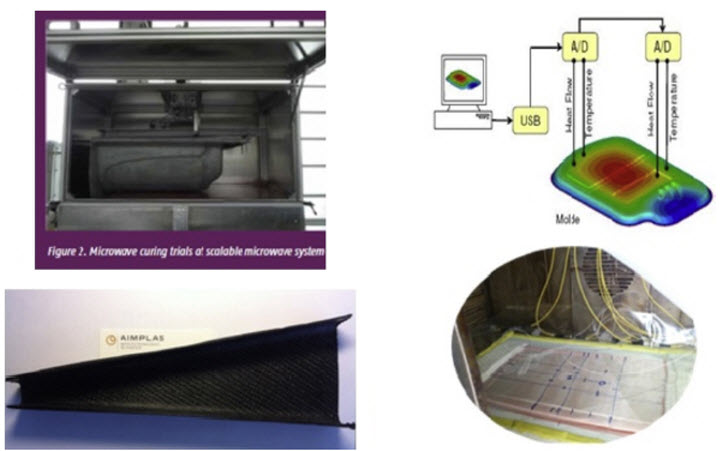
Regarding to the vehicles lightweight of, the impact of their weight on fuels and different energy sources consumption and the width of design options, makes composites products an efficient alternative for the transport sector.
The use of vehicles represents the 12% of the total CO2 emissions (main greenhouse gas) in Europe. Among the main objectives of the automotive industry to reduce automotive’s impact on the environment, we can stress:
- European Regulations: Manufacturing of new cars whose maximum emission is 4130 g CO2/km in 2015 and 95 gCO2/km in 2020.
- Relation with the fuel consumption: the objective for 2015 is toreach ‘‘5.6 l/100 km’’ of gasoline and ‘‘4.9 l/100 km’’ of diesel. Because of that and to the necessity to reach high production volumes to satisfy the requirements of the sector, a series of aspects are considered a key to the innovation in the automotive sector:
- Weight reduction
- Raw materials cost reduction
- Short cycle times
- Fuel efficiency
- Emissions’ reduction
- European normative performance
The lightweight of vehicles contributes to the performance of these objectives, because the decrease of the vehicles’ weight allows the reduction of both, the fuel consumption and greenhouse gases emissions. According to various studies, a reduction of the 10% of the vehicle’s weight translates into a 7% improvement of the consumption. The vehicle’s weight can be reduced through changes in the design, the use of new materials and the use of assembling techniques. That can give us an idea of the potential that composites have in the automotive sector, because they are lighter materials than the currently used ones (metals), with good mechanic properties and that allow the use of new designs.
The use of reinforced composites with carbon fiber in the automotive sector is currently relatively low, but growth rates better that in other sectors are expected. According to some market studies, the market of composites reinforced with carbon fiber will suffer a solid growth until the year 2020. This growth is being leaded by the automotive industry, which focus their efforts on the construction of lighter vehicles, a more efficient use of fuels and better emissions. Some relevant examples of composites application in the automotive sector are already coming to the market:
BMW i3: is based on a new concept of construction focused on electric vehicles. The passenger compartment is build in CFRP (carbon-fiber-reinforced polymers). The composites of carbon fiber are 75–80% lighter than steel and around 30–40% lighter than aluminum, which allows BMWi3 to establish new standards in the lightweight construction and at once offsets the additional weight from the high voltage ions battery. At the same time, carbon reinforcement is a high-module elastic material that can be used in a versatile way for constructive purposes and that increases the safety of passengers vehicle.
Chevrolet Corvette Stingray 2014: manufacture of the bonnet using carbon fiber and development of improvements in the secondary manufacturing processes, which means a reduction of the 5% in weight and the 7% in direct costs.
Teijin4-seater Concept Car: CFRP structure made in thermoplastic prepregs (PP, PA) adapted to high volumes of production through press technology, which represents a significant vehicle’s weight saving thanks to the use of CFRP. The use of CFRP is currently limited to a small number of cars, but the market is being opened to series-production vehicles, a fact that will have a significant impact on CO2 emissions and the energy consumption at a global level. The industrial applications of plastics and composites that are being developed in today’s and future’s industry in the automotive sector allow to highlight the implemented improvements in the performance of the new vehicles and to accelerate their acceptance in the market, what supposes a clear opportunity for the composites sector.
But, there are also challenges that must be overcome in order to get a complete introduction of the composites in the automotive sector:
- Clear necessity of optimization/automatization of processes in order to reduce process costs and to increase the production capacity.
- Reduction of raw materials costs, such as carbon fiber.
- Higher knowledge of composites, their behavior and composites
- design criteria.
- Recyclability
- Need to develop and involve the whole value chain (raw materials, converters, companies of goods and services, engineering specialized in automatization, mould manufacturer, Tier1-3, OEMs, etc.)




